The Birth of the Garden — from Hell to Paradise.
Please read part 1 for Niki’s early life, turbulent youth, and influences
Read also My Romance with Tarot
After a nervous breakdown, Niki de Saint Phalle was hospitalised in a mental asylum, and subjected to electroconvulsive therapy. Despite all, the asylum proved to be a place of healing. Freed from housework and parenting duties, she wandered the grounds, feeling reconnected to nature, picking up twigs and leaves with which she made collages. When a friend brought her painting supplies, she began to paint and her condition rapidly improved. In six weeks, she was out again, traveling with her husband Harry Mathews and their daughter. They settled in Spain, and their second child was born in 1955.

In Barcelona, Saint Phalle visited Gaudi’s Park Guell for the first time. It was her meeting with a master, an experience so overwhelming that it made her tremble with a sense of destiny. “I knew someday I would make my own Garden of Joy,” she wrote.
In the asylum, Saint Phalle had been reborn as an artist, but her marriage was unraveling. At the age of thirty, she made a painful decision: to leave Harry and the children and to make a life in art, although she had no formal training and was completely self-taught. She moved to Paris, joining other artists in a makeshift studio behind the Montparnasse train station and there living rough without plumbing, she began her meteoric career. She shared a studio space with the man who would be her rival, lover, and soul mate for many years to come: Jean Tinguely.
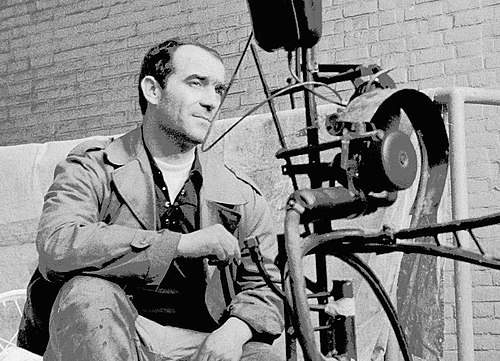
Sainte Phalle’s career is divided in three phases: feminist rage in which she wanted to blow things up and literally did so with her Tirs (Shooting Pictures). These were performances in which she fired a rifle at relief paintings where bags of paint had been concealed inside the canvas, exploding on impact. Next came the Nanas– rotund, buoyant, whimsical, female figures inspired by archaic fertility goddesses made of fiberglass and polyester resin, often accompanied by playful monsters and animals. Here the feminine is associated with fun, empowerment, freedom. Last came the phase in which sculpture morphed into architecture: monumental fountains, domes, chapels, and inhabitable structures. Saint Phalle is one of the very few women sculptors who have worked on such a vast scale. She wanted to prove that women can make monumental art just as men can.
She had dreamed of creating her garden for years, seeking the right spot, which she thought might be Africa or South America, a place that would contrast starkly to the urbanization of contemporary life. By chance or fate, the chosen spot turned out to be a former quarry in the Tuscan Maremma. The land belonged to the Caracciolo brothers, whose sister, Marella, wife of Gianni Agnelli, happened to be a close friend of Niki’s. Saint Phalle swept into Garavicchio, the Caracciolos’ village, like a whirlwind, wearing a polka dot dress and a straw hat decorated with a flock of birds. Showing them a tiny clay model of the sculptures she envisioned, she demanded, “I need a piece of your land to build a park based on the Tarot cards.” The area they selected was enclosed by rocky cliffs forming a sort of amphitheater, which had once been used by the Etruscans as a burial site.
There could have been no better place than here in Maremma, near the province of Viterbo where several of Italy’s greatest esoteric gardens are located: Villa Lante, the Sacred Grove (aka the Park of Monsters) of Bomarzo, the gardens of Villa Farnese in Caprarola. By placing her garden here, Saint Phalle had connected up with the local tradition of landscape narratives and healing gardens. In the sixteenth century mannerist tradition, those gardens were to be “read” with the heart and mind as much as they were to be enjoyed with the senses. The placement of fountains, trees, and sculptures obeyed a narrative strategy that might reveal a secret doctrine, heal an illness, enhance political power, lead the way to spiritual enlightenment, or simply alter fate. Such gardens were magic books hewn in stone, in which the visitor, while wandering about, became the actant or performer of an ever-changing story, a necessary element in the garden’s magic.


For Saint Phalle, the Tarot Garden was a corner of paradise achieved through an inner itinerary of sacrifice and spiritual growth. In creating her iconography of the twenty-two arcana, the artist reinterpreted the traditional figures of the cards through her own experience and understanding. Some of the sculptures in the garden: the Devil, the Moon, Temperance, the Chariot, the Hanged Man are based on well-known illustrations found in classic Tarot decks. Others deviate from the traditional depictions to express her own vision. She wanted to capture the essence of each arcanum as she had personally experienced it.
The monumental sculptures were built by first welding a steel framework for each piece, covering it with mesh wire, and then spraying it with concrete, to create gigantic, grey, somber forms. Next the sculptures were covered with brightly colored ceramic tiles, glass, and mirror fragments. The glass mosaics were brought from Venice, and the ceramic tiles made locally, many designed and produced by the Italian ceramic sculptor, Venera Finocchiaro.

The first figures visitors encounter upon entering the austere enclosure is Arcanum 2, the HIGH PRIESTESS, a fantastic turquoise clown mask with open mouth, inspired by the Hell Mouth of Bomarzo, from which water cascades down a flight of stairs into a pool. On her head is mounted a second silvery face covered with mirrored tiles with a hand jutting up from the top of its head. This is Arcanum 1, the MAGUS – also known as the Alchemist.

In combining the two arcana, the High Priestess and the Magus, Saint Phalle is telling us that the Magus – who represents the creative force, pure energy, play, and active intelligence—springs from the head of the High Priestess – (just as Athena sprang from the head of Zeus). She represents feminine intuition, the irrational, and the unconscious. The two principles – male-female/ intelligence-intuition/ ego-the unconscious are united in Saint Phalle’s vision. The hand of the Magus grows from his head, reaching up to connect him to the sky, but he is grounded in the Priestess below. The water flowing through her purple lips animates a wheel sculpture in the pool: the WHEEL OF FORTUNE, designed by Jean Tinguely.
In traditional Tarot imagery, water appears in three of the arcana – Temperance which shows a woman pouring water from one pitcher to another, the Star, where a woman pours water from her pitcher into a stream, and in the Moon where a scorpion crawls up out of the sea. In Saint Phalle’s vision, water – life energy – springs from the union of the High Priestess and the Magus.
The male/ female binary is further expressed in two other arcana located nearby: the EMPEROR and the EMPRESS – complex architectural structures. The Emperor, representing male energy in both its positive and negative manifestations, assumes a double form: a phallic mosaic tower topped with three gilded onion domes and a red rocket aimed at the sky. Saint Phalle said of this arcanum: “The emperor is the power of organization and aggression which has brought us science, medicine, but also weapons and war…he is the patriarch and male protector who also wishes to control and conquer.” The two vertical male structures rise from a horizontal arcade held up by twenty-two columns, each one covered with fabulous decorated ceramic and mirror tiles. Stories, poems, symbols are scribbled on the tiles.
Across from the emperor lies the EMPRESS, a gigantic Nana, envisioned by Saint Phalle as an enormous sphinx and as a black Madonna, wearing a red crown and a blue star-studded headdress. Writes Saint Phalle – “She is the Great Mother, the Queen of Heaven, Mother, Whore, Emotion, Sacred Magic, and Civilization.” She is motherhood, fecundity, fertility. Inside this fantastic structure Saint Phalle created a mirrored womb environment which she turned into a home, complete with kitchen, bedroom, bathroom, living and dining area. The bedroom was located in one of the Sphinx’s huge breasts, with the window in her nipple.

Saint Phalle strongly identified with her Nana figures, and the Empress was the Nana of Nanas. The artist lived in this space for eight years while working on the Garden, and it was here her team of craftsmen and artists met to discuss their daily progress. She formed close bonds with her team for whom she felt she had become a mother – living inside a mother – the Empress. At times this womb-home became confining. There were periods when she refused to leave the garden, staying mostly inside the Empress, in solitude.
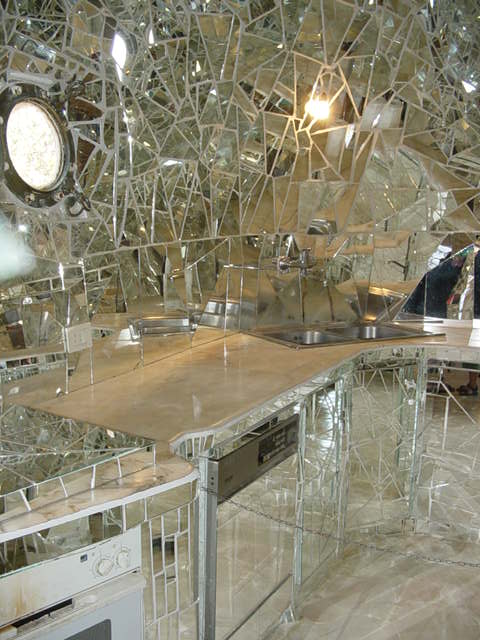
It was here, safe inside the Empress-Sphinx, nurturer and maternal protectress, that she wrote her memoir Mon Secret, revealing the incest and abuse which had troubled her early years. Through the act of writing, she found a way to forgive and free herself from the past. Yet she would struggle all her life with feelings of guilt for having abandoned her children, even though she maintained a relationship with Harry and their children, including them in her life and projects.
Throughout the garden, we find a reconciliation of the male and female principles, a concept to which Saint Phalle would return in later works, such as the monumental sculpture Coming Together, in San Diego. In the Tarot Garden, Arcanum 6, the LOVERS, is rendered as Adam and Eve; while the HERMIT, Arcanum 9, is presented in both male and female versions, deviating from the traditional depiction which shows a monk or mendicant holding a lantern. Her male Hermit is a solemn figure covered in mirror tiles, with a stylized mask calling to mind both ancient Greek masks and a medieval knight’s visor. The use of mirrored tiles throughout the garden is a way to include the visitors in the sculptures by reflecting their images upon all the surfaces, so that they become part of the sculptures themselves. This is true of the Hermit, representing the search for self-knowledge.
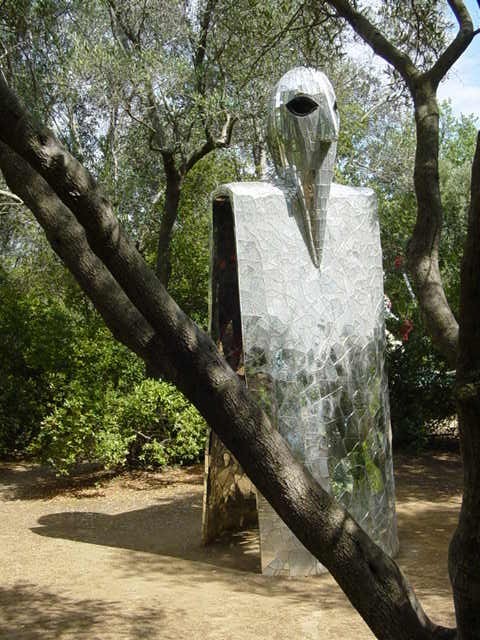
The feminine hermit is the ORACLE, a mysterious figure wrapped in serpents, even her arms are serpents – suggesting the ancient rite of incubation. You can enter the Hermit and the Oracle, stand inside, listen to them, and assume their identities.

STRENGTH, Arcanum 11, is another figure shaped by the artist’s personal vision. In the traditional depiction, a woman closes the jaws of a lion. In Saint Phalle’s, the lion has been replaced by the Dragon of the fairy tales she loved as a child. A princess tames the Dragon by means of an invisible leash. Other key arcana for Saint Phalle are the Hanged Man, the Sun, and the Angel of Temperance, who became her spiritual guide.

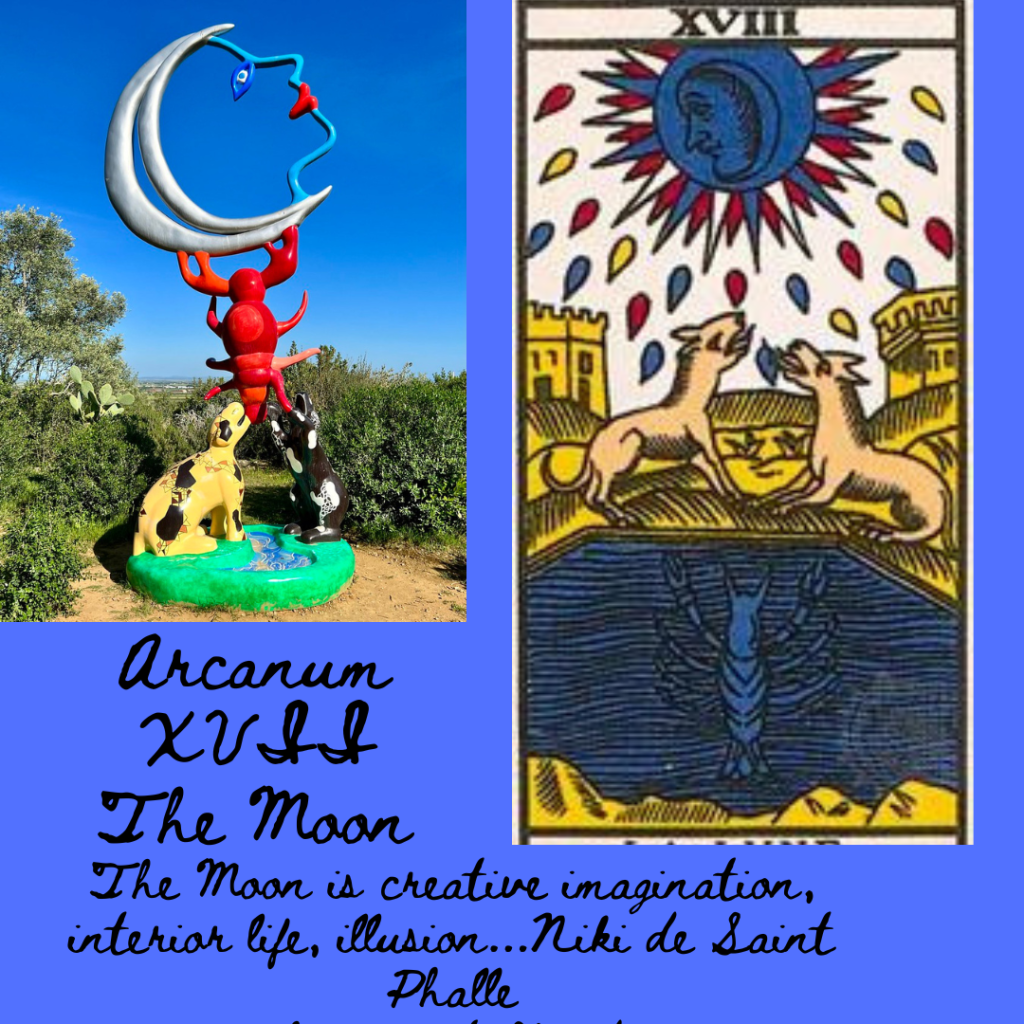

Niki de Saint Phalle personally financed and built her Tarot Garden costing at the time five million dollars, although she was helped by fellow artists, workmen, friends, local people, lovers, admirers, and enthusiasts. To raise funds for the garden, she created a perfume which became an international success. Friends also chipped in, bringing suitcases full of cash. She also created and marketed a line of Nana-shaped pool toys.
Along the way, she encountered many obstacles, including illness. Severe rheumatoid arthritis disabled her from working on the garden for long periods. She developed lung disease from using the polyester resin. She also struggled at first with the fervent opposition of local residents who objected to her project, calling her sculptures “Monsters.” When bureaucratic snares developed concerning the lack of building permits, a white knight appeared as in all fairy tales to rescue what is good and true: François Mitterand, a great admirer of Niki de Saint Phalle’s work, saved the garden from Italian red tape more than once.
Paths seem random through the Garden, and, at Saint Phalle’s request, there are no guided tours. The point of this garden is to discover it yourself, and while doing so, discover yourself. There are however two main routes to explore – one departing from the Sun takes you up a wide, easy, well-paved path. The other is harder to find. You must climb over the dragon’s tail, then follow a narrow, slippery trail. From here you encounter more directly the Moon, the Devil, and Death, with whom the artist had to come to terms. Hardship, love, enthusiasm, obsession went into making this garden, she writes. but above all, faith. “Nothing and no one could have stopped me.” “The garden is my husband, my love. It was everything to me. No sacrifice was too great for him.”
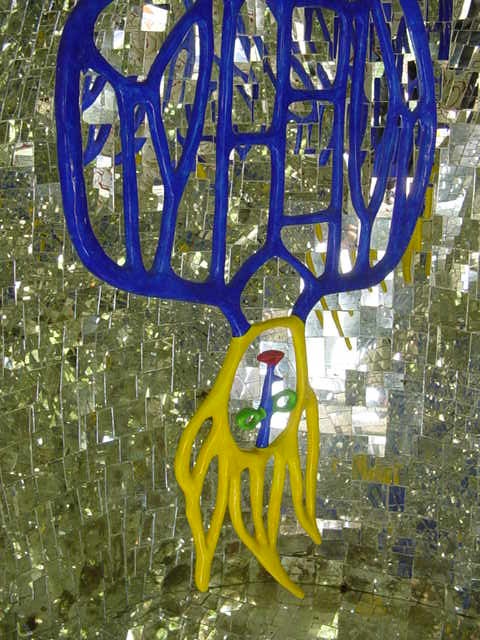
One thought on “The Tarot Garden of Niki De Saint Phalle. 2”